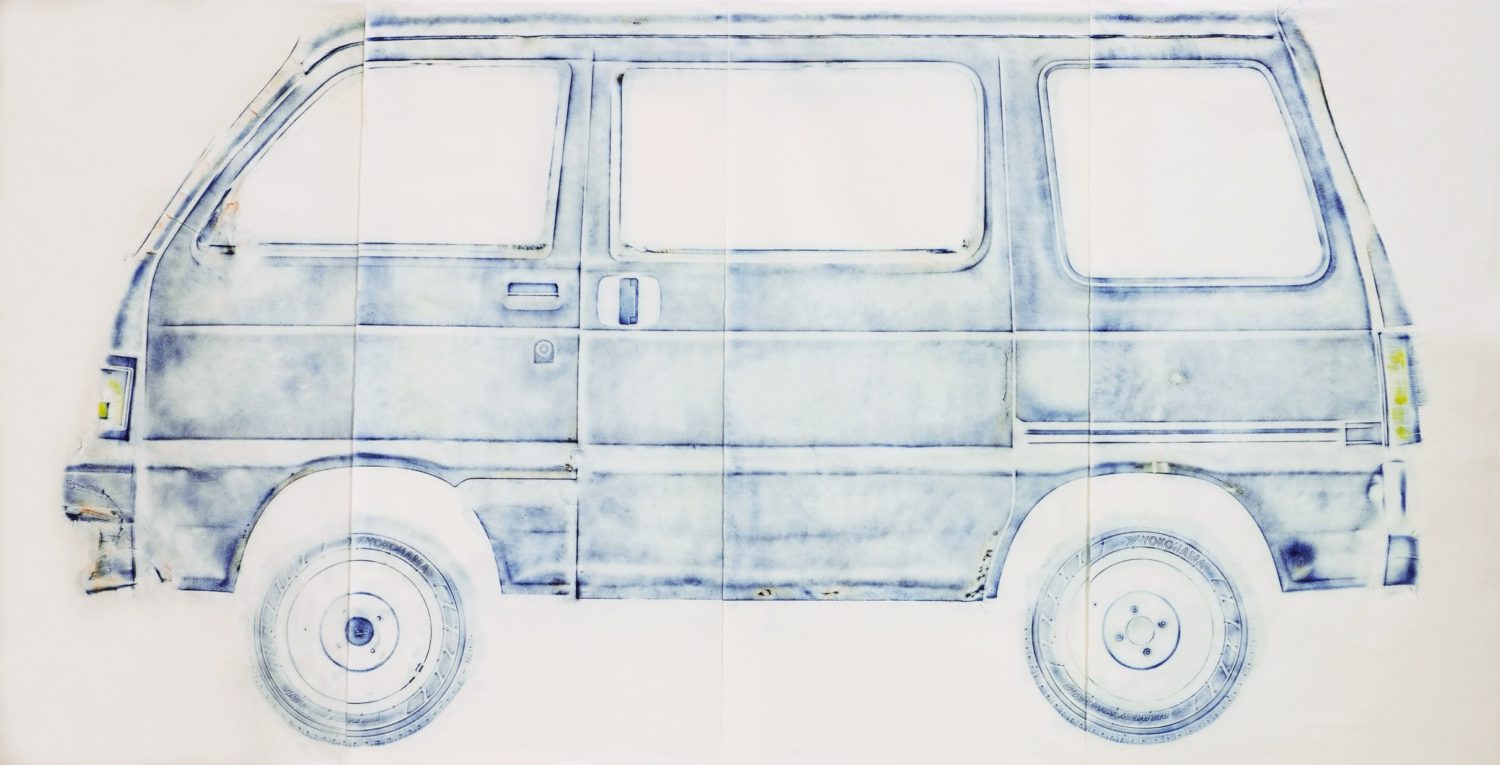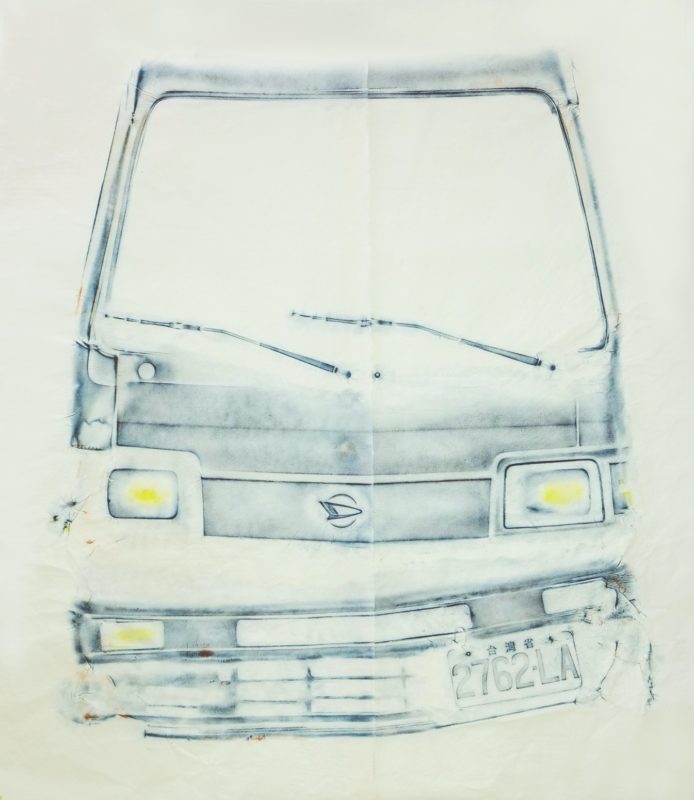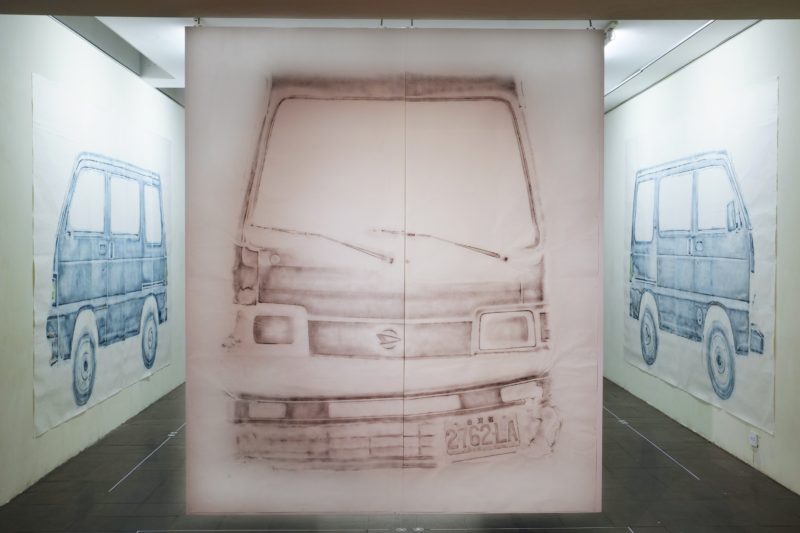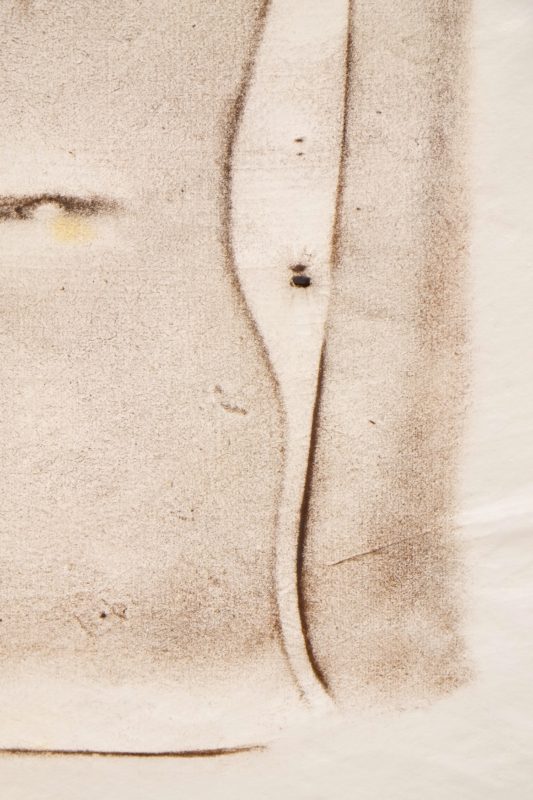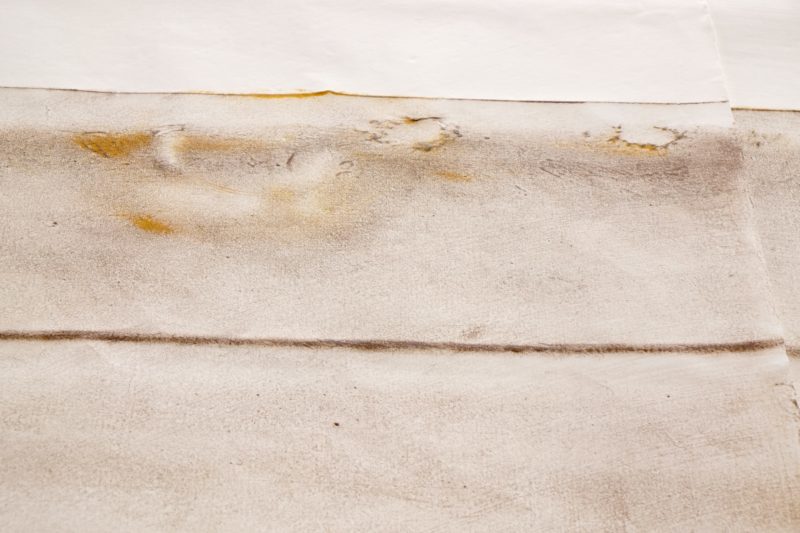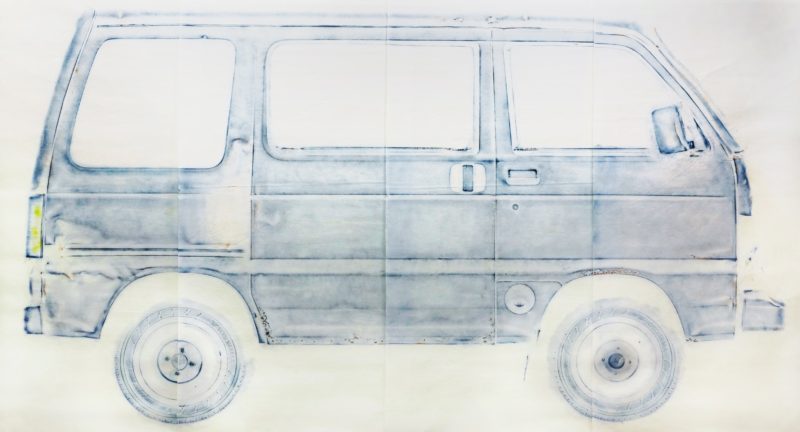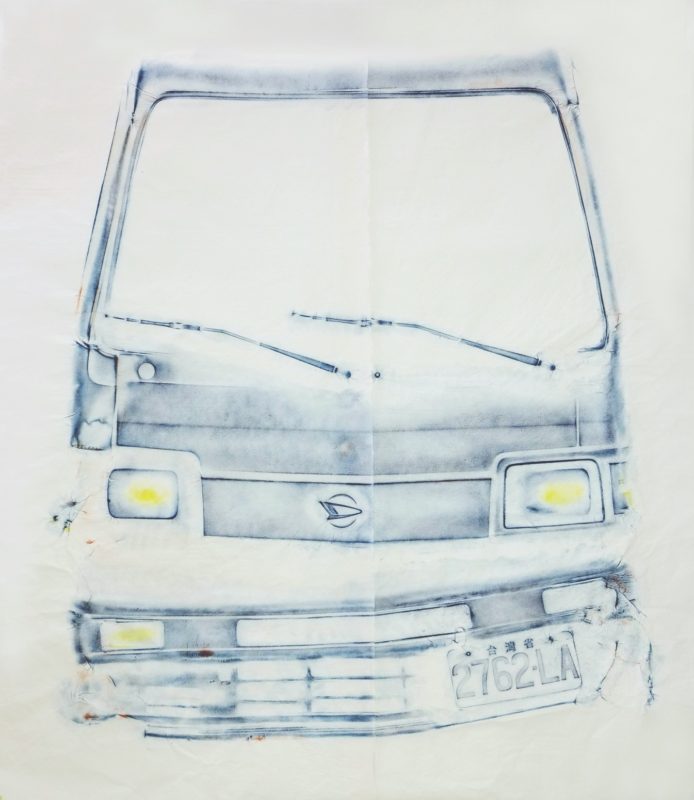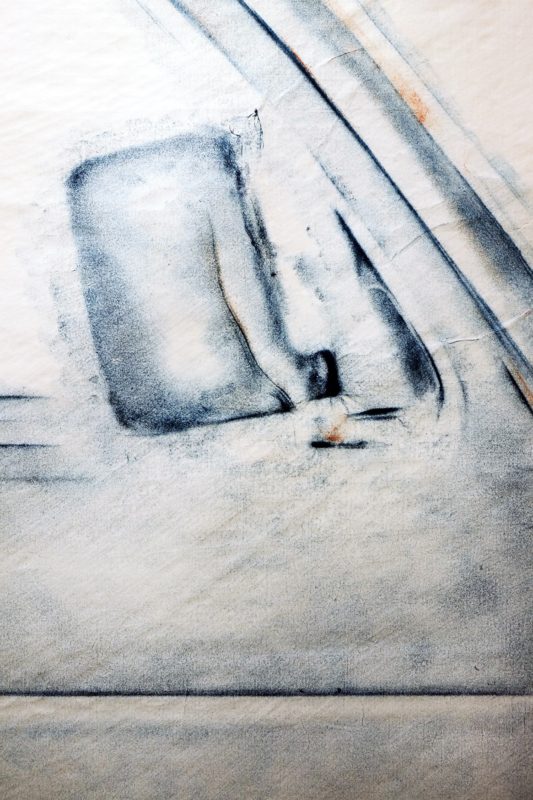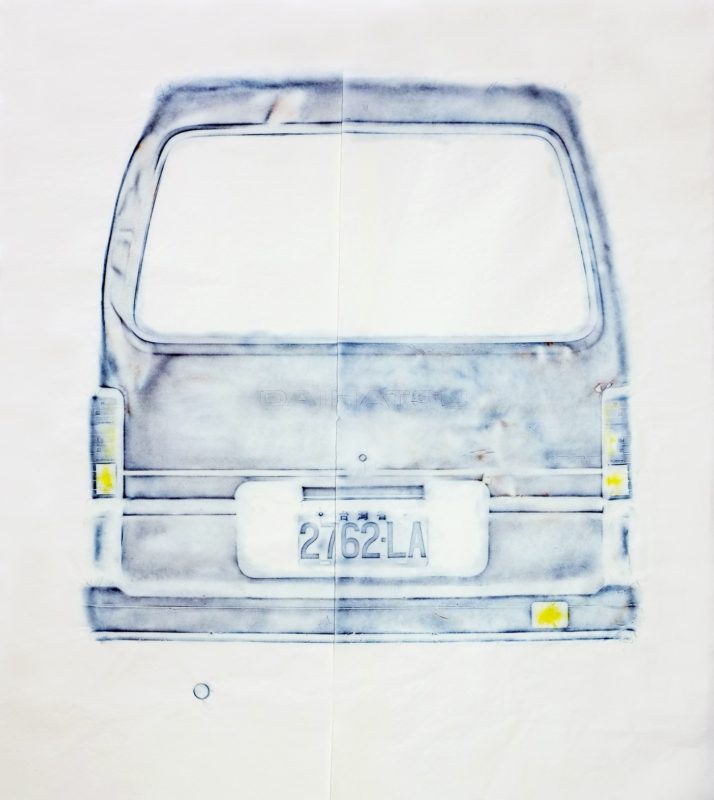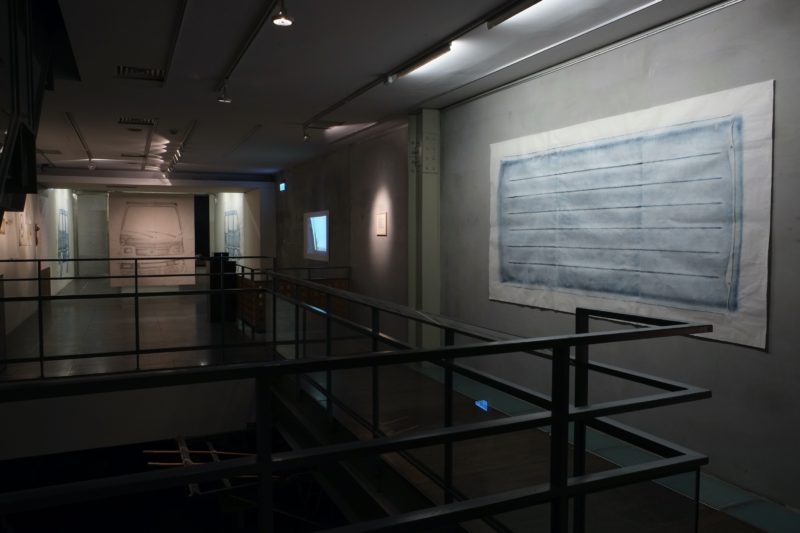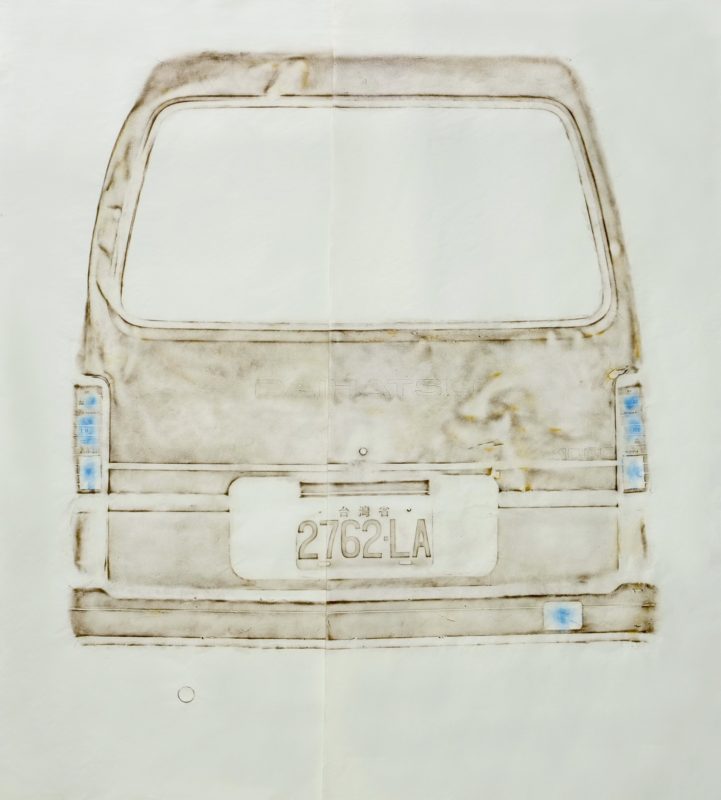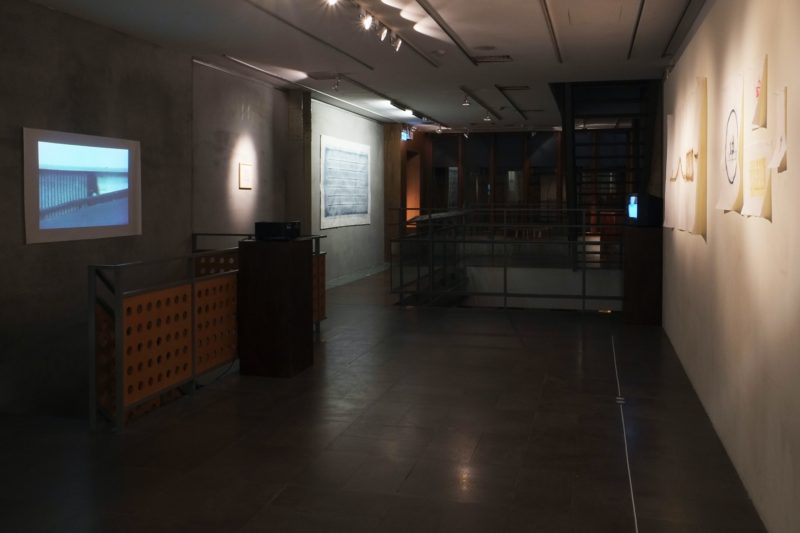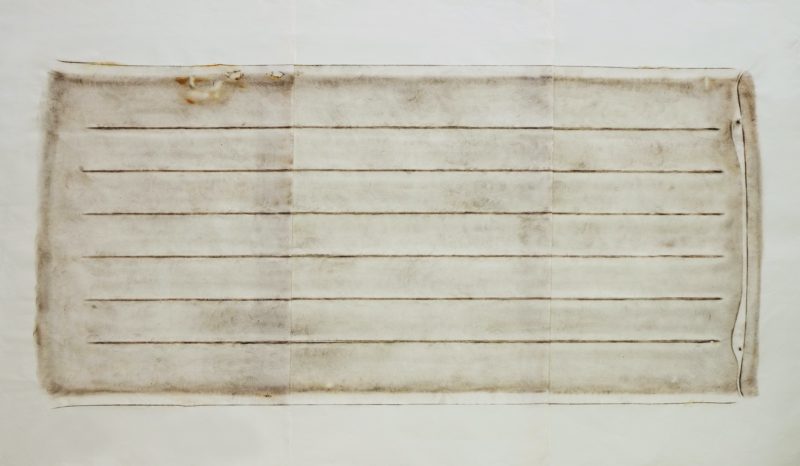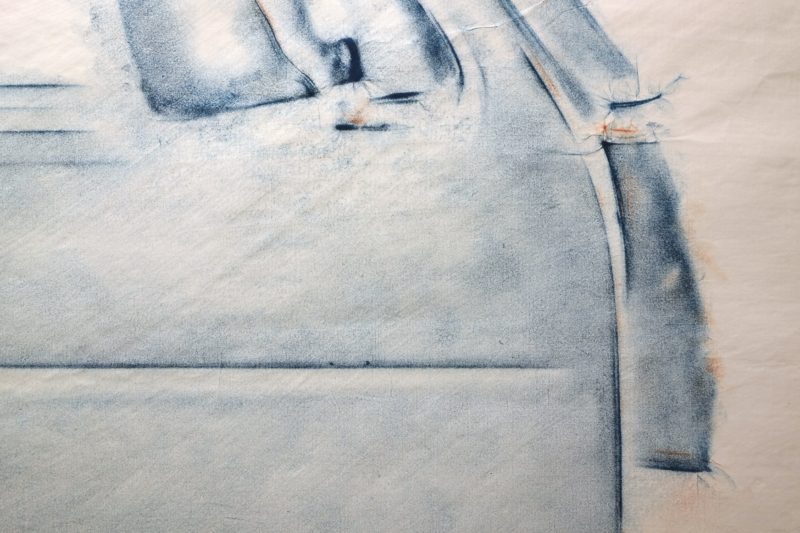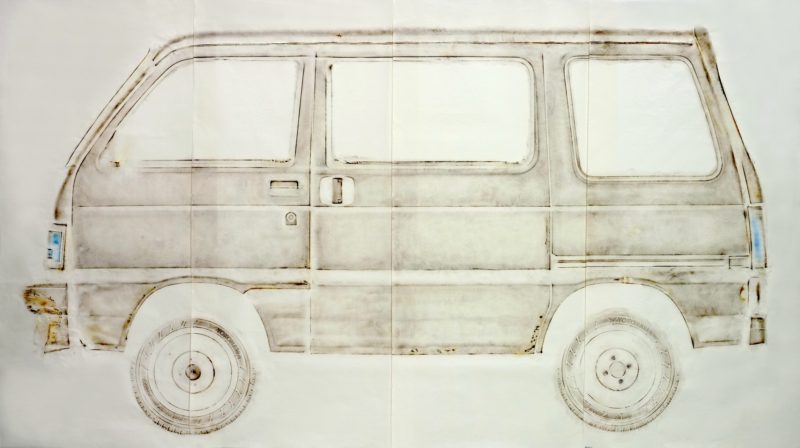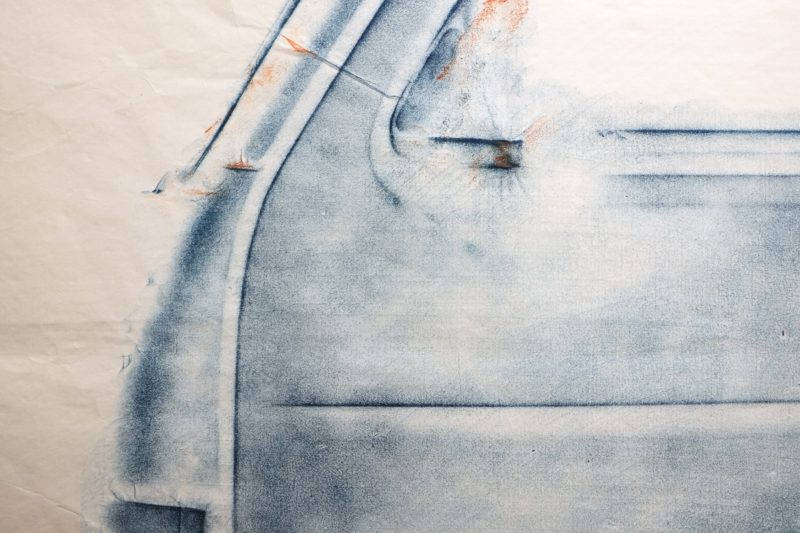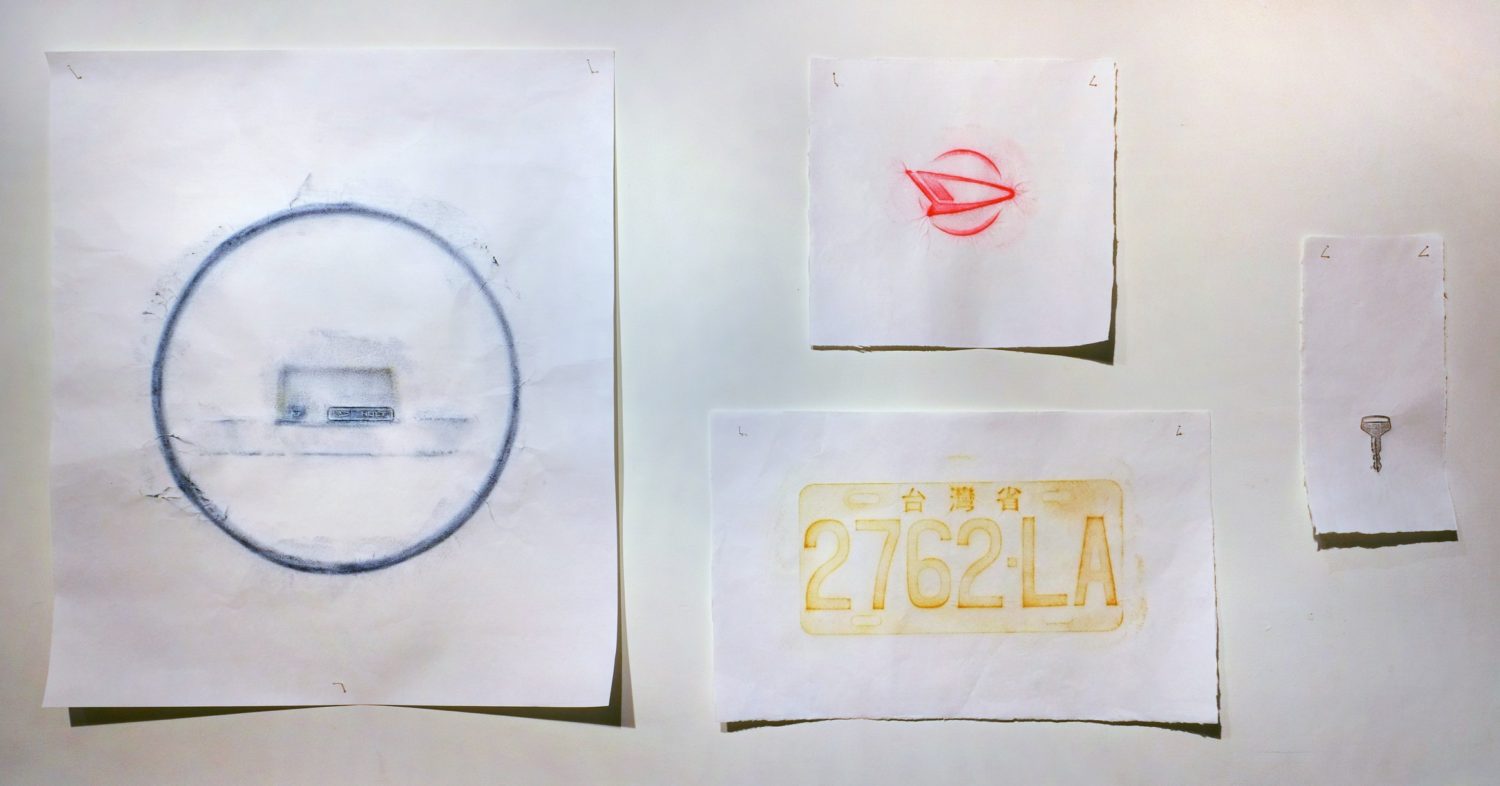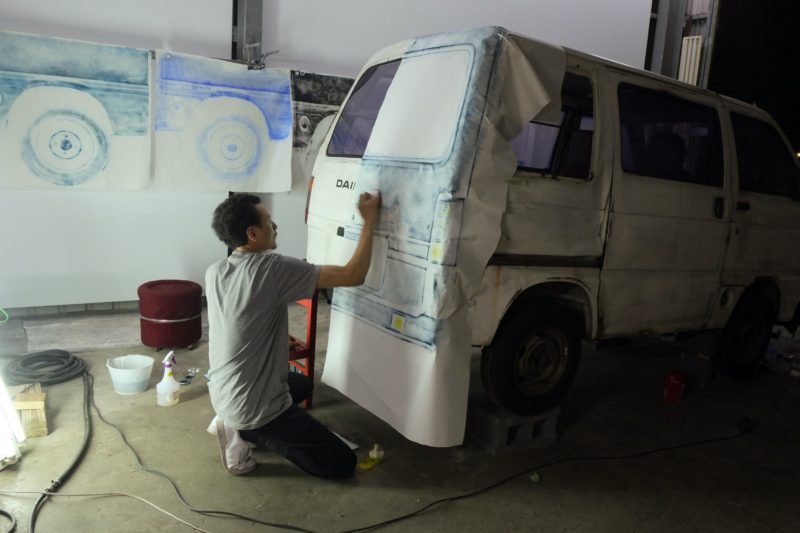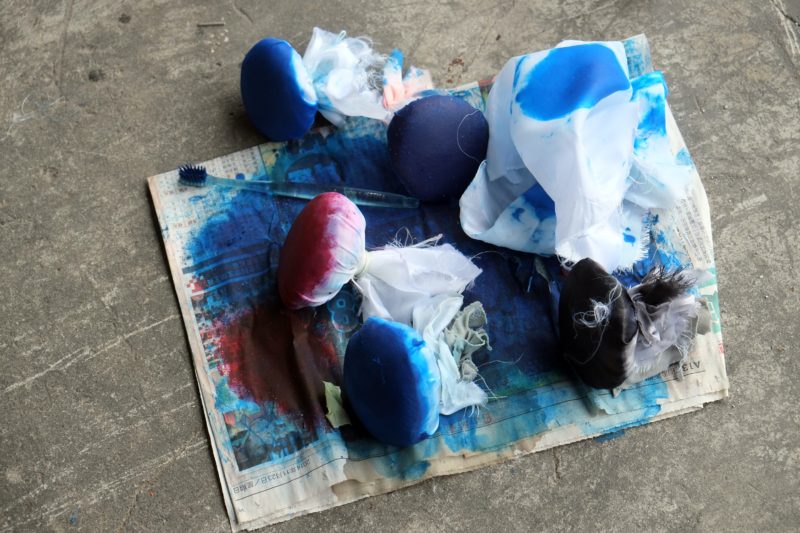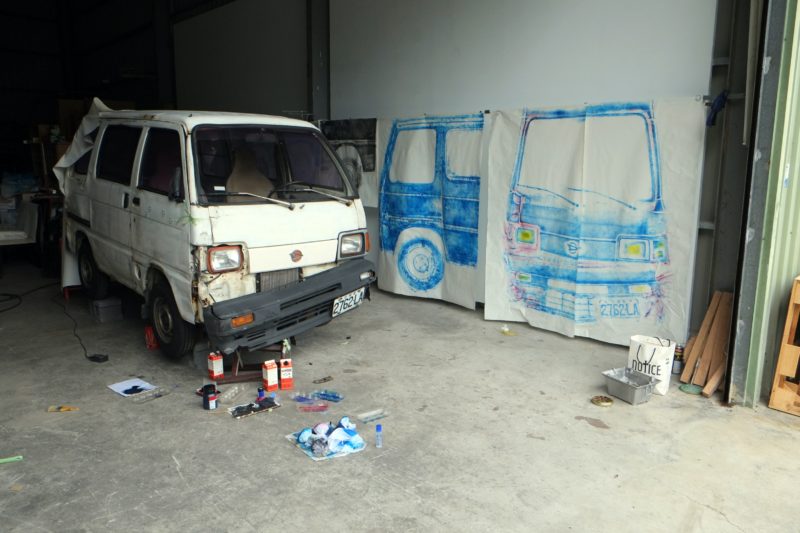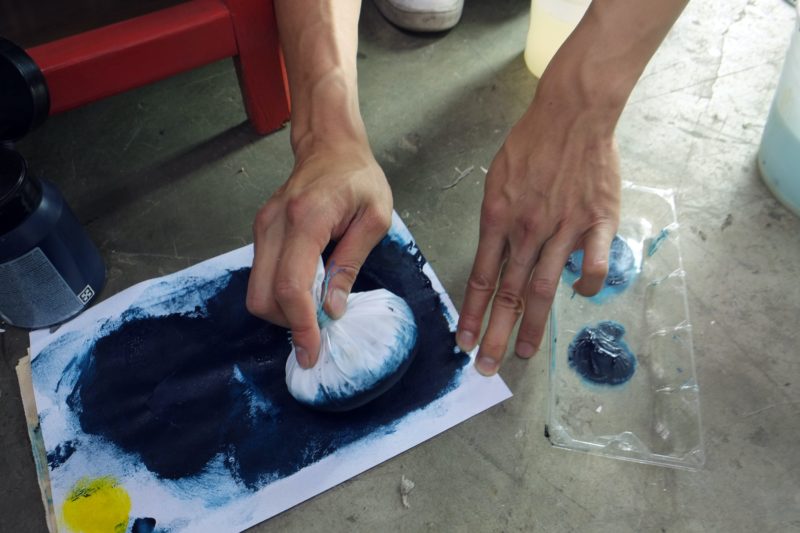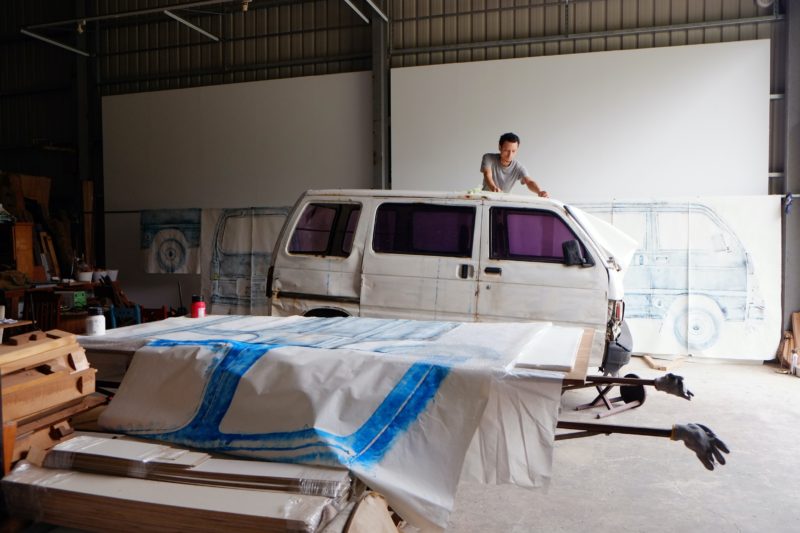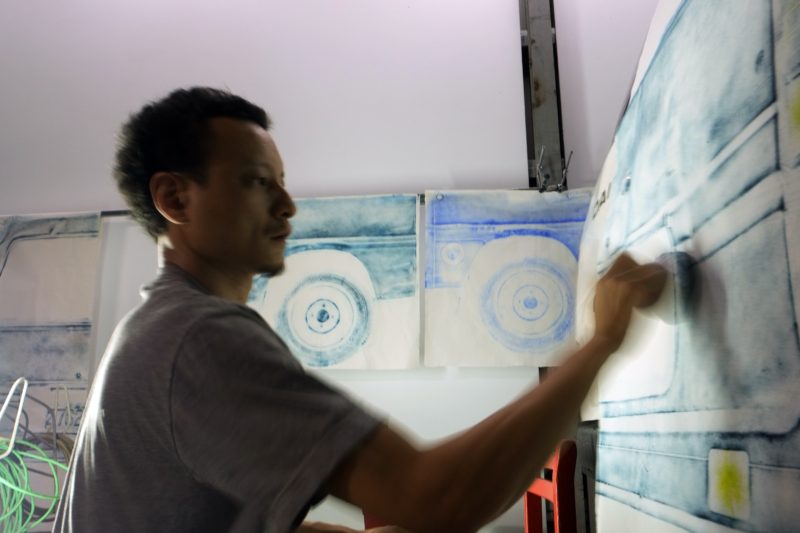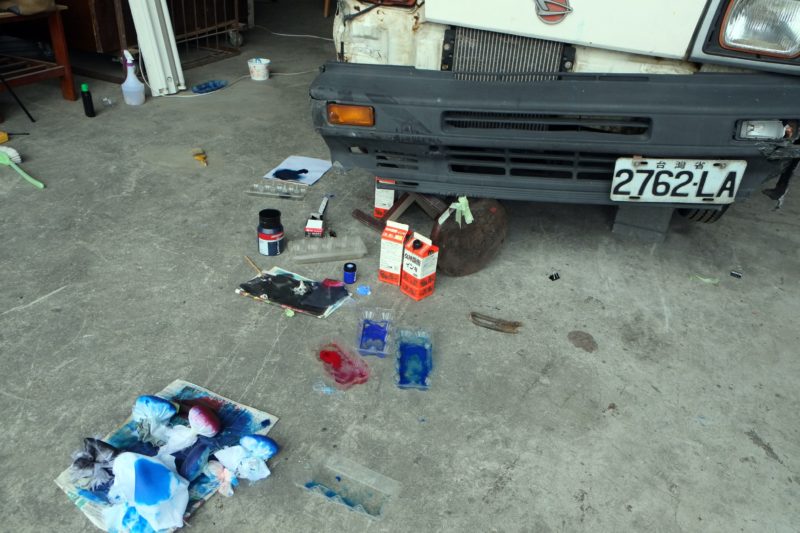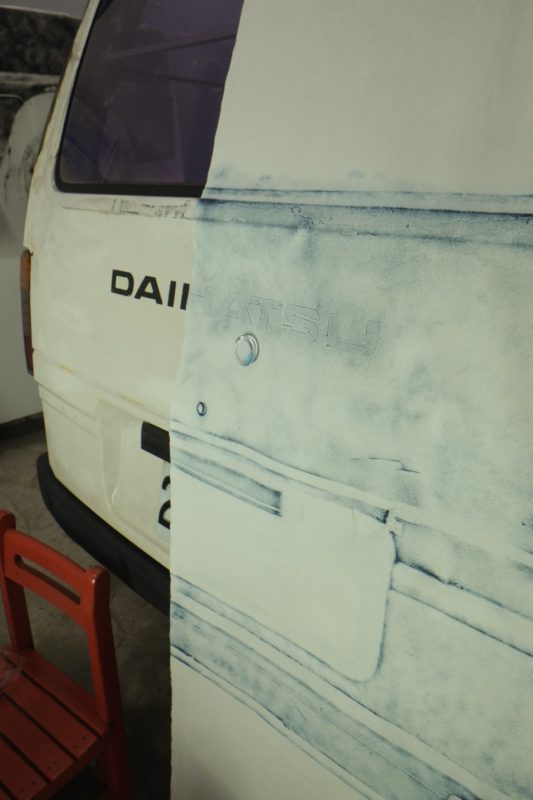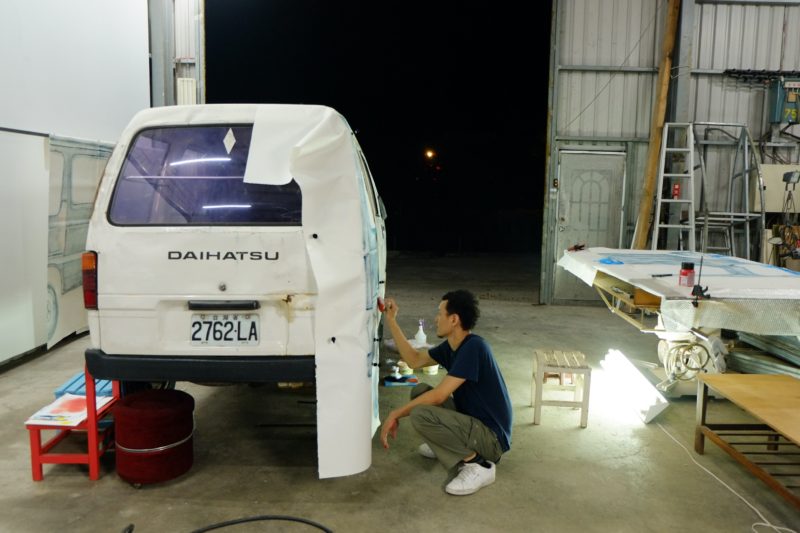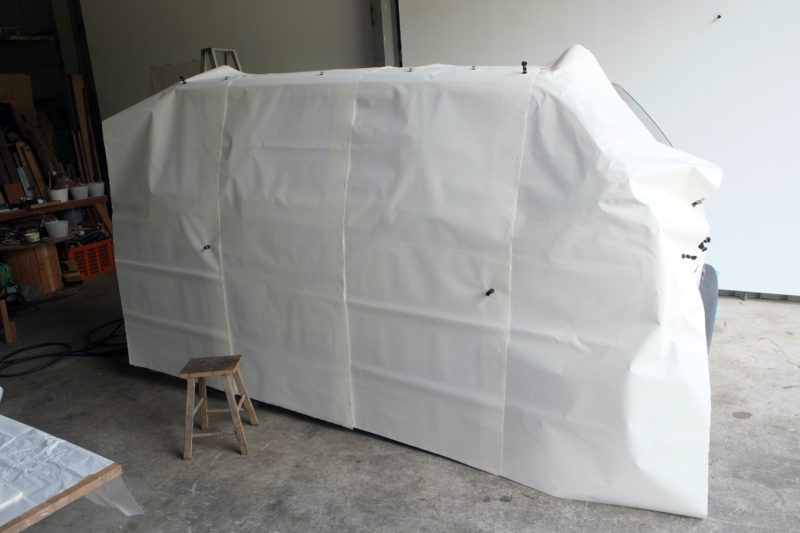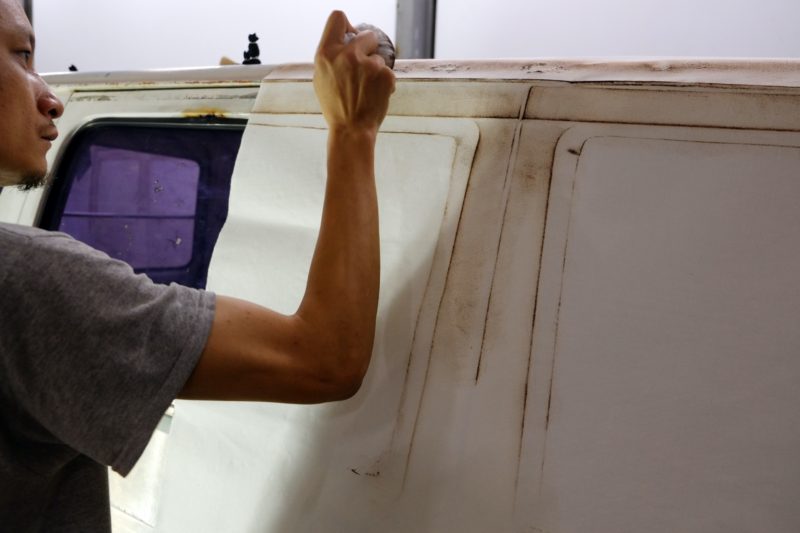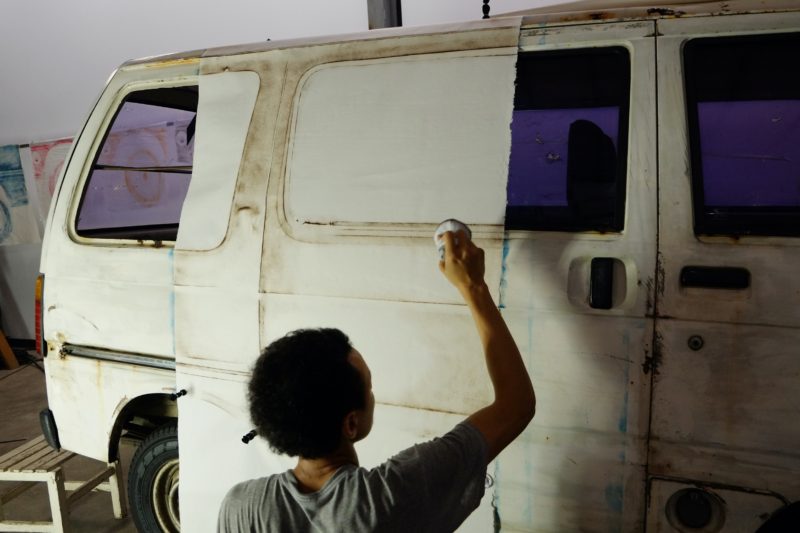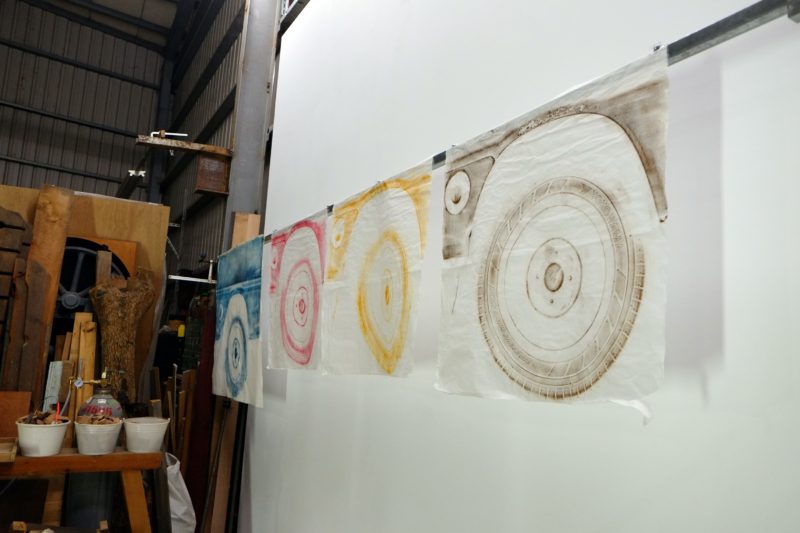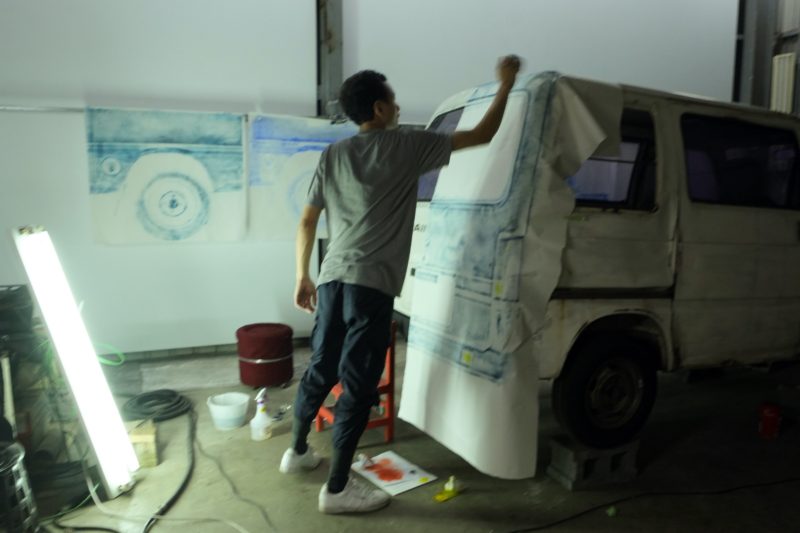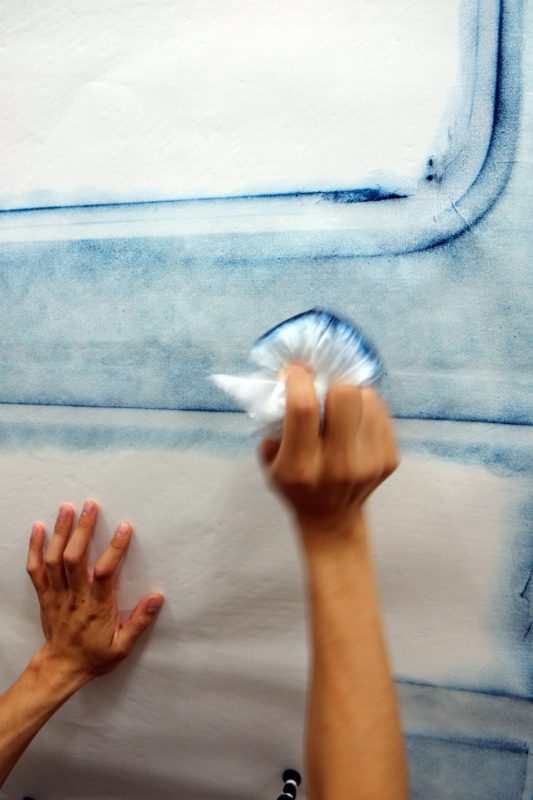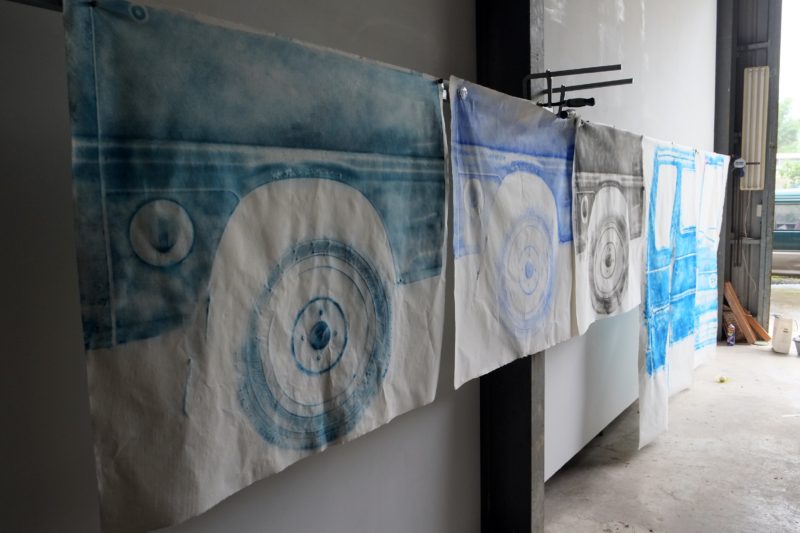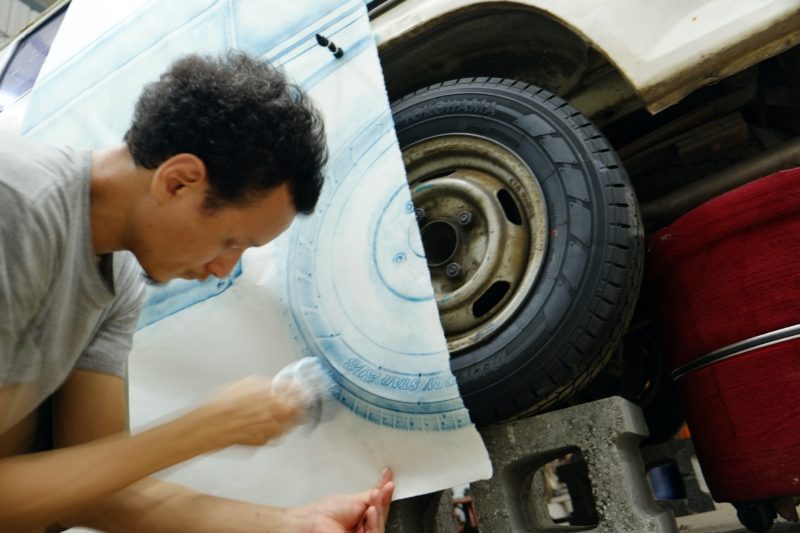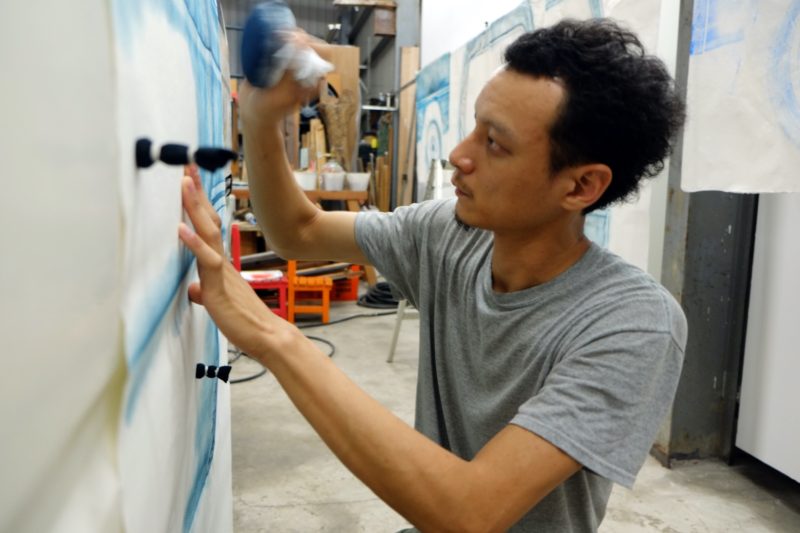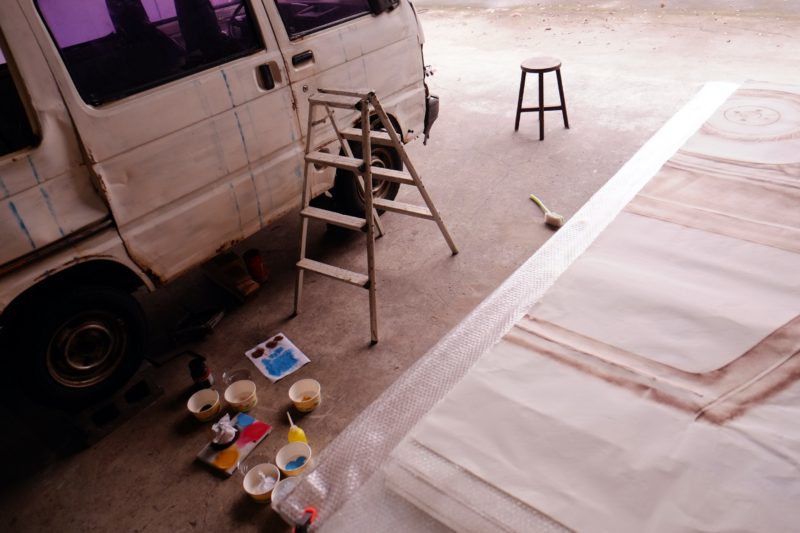作品概要:
藉由拓印的古老技法將自己車身充滿鏽班、凹陷的麵包車轉化為一幅幅色彩層次變化的水墨作品,探討沈重如何能變得輕盈、價值如何能重新建立。
關鍵字:車、物件、拓印、平面
大發好載-紙外裝 Daihatsu Hijet-Exteriors
宣紙、壓克力顏料、墨
Xuan paper, acrylic color, ink
車前Front: 138 x 175 cm, 車後Back: 136 x 150 cm, 車左Left: 170 x 320 cm, 車右Right: 170 x 320 cm, 車頂Top: 240 x 110 cm (藍、咖啡、墨色三版 Blue, brown, black ink 3 editions)
2015
大發好載-紙零件 Daihatsu Hijet-Parts
宣紙、壓克力顏料
Xuan paper, acrylic color,
方向盤37 x 37 cm, 排氣管192 x 20 cm, 大發標誌11 x 8.5 cm, 車牌32 x 15 cm, 鑰匙3 x 6.8 cm
2015
作品說明|Description
大發「好載」(Daihatsu Hijet),1989年出廠,一台伴隨著我創作過程的麵包車,車身塊塊凹陷、處處鏽孔,另種世界就在大小縫隙中出現,痕跡發散出人與物件的交雜。藉由拓印將鋼鐵的車體轉換為輕盈的紙張,古老又崇敬、直接且緩慢地在記錄之上呈現種種愛恨憂喜的風景和情感。
拓印,紙張發明後源於中國的古老技術,印刷術的前身,有別於其他記錄形式,可直接記錄對象物的形狀質感,除色彩外、皆可直接呈現。古時的碑拓、青銅器拓,近代的魚拓,都是實物記錄的例子。
2004年接手這部友人家中的閒置車,維修到能開的費用已超過車子本身的價值,那年也是進入南藝研究所,藝術生涯的開始,沒有可以載大材料、代步的交通工具便無法動彈,加上與車子的緣份,因而不計成本的展開與它的生活。畢業時為了呈現空間作品,甚至在車上住了四個月寫完論文。北上後的創作工作更是離不開它,有一回南下台中佈展,拋錨高速公路半途,當下只好請拖吊車先拖至展場,看著作品從大車上的小車搬出,心裡很複雜,卻也有種說不出的滑稽感。
創作橫豎往生活裡砸來,反而忽略了賴以創作的工具車,早已累積了許多遭碰撞、自然鏽蝕等歲月的痕跡,驚覺時,心中一直有將它轉化為作品的念頭,便在去年與樹火紀念紙博物館敲定此次個展以紙張拓印車體為展覽主軸,今年三月,竟發生公車駕駛不當導致我行車翻覆的憾事,反令人莞爾的是車身上能夠拓印的部份卻增多了,這一來一往的總總情事使人感到無常,卻因此加深生命的痕跡,亦更加確認以紙張拓印車體對個人的意義,一如拓印轉化鋼鐵為紙,將總總沈重也變為輕盈、多彩多姿。
The Daihatsu Hijet left the factory in 1989, is a van that has accompanied me throughout my career in producing creative works. Within the dents and rust holes throughout the car’s surface, a different world has appeared. Between these big and small fractures or cracks, the interconnected traces and overlaps reveals between People and objects. As these pieces of rubbings transform the steel-made car body into feather-light, thin papers, they nostalgically, respectfully, directly and slowly recorded various tableaus and feelings of love, hatred, worry and delight in life.
Rubbing, an ancient technique which originated from China following the invention of paper, is a predecessor of the printing technique. Distinct from other forms of recording, rubbings can directly represent the shapes and textures of different objects, with the exception of its colors. Stone-rubbing, Bronze ware-rubbing in ancient times and the contemporary fish-rubbing are all examples of recording and reproducing objects.
This forsaken car was transferred by a friend of mine in 2004. The cost of repairs to make it function properly actually exceeded the value of the car itself. I was just starting my studies at TNNUA on the same year hence it also marked the beginning of my art life. It would have been impossible for me to travel without transportation due to the amount of bulky materials I need to bring with me. Moreover, I felt a certain destined connection with the car, so I decided to keep it despite the prohibitive fees that went with its purchase.
Therefore, we started our life together thereafter.
Just before graduating, I was working on creating my three-dimensional work to meet the graduation requirements. I even lived in the car for four months in order to finish my thesis. The car became even more indispensable to me afterwards, since I moved north to continue my creative pursuits as an artist. There was one time when I had to drive south in order to prepare installations for one of my exhibitions. The car broke down halfway on the highway. There was nothing I could do but to call the tow truck to haul my car to the exhibition site. As my artworks were being pulled out from my small car that was boarded on the much bigger truck, the scene evoked lots of mixed feelings within me, together with a sense of inexplicable amusement.
As my life slowly got overwhelmed by the different aspects of a busy creative career, I paradoxically overlooked the fact that The Daihatsu Hijet, which I had depended on so much in my career, had accumulated numerous remnants of time such as crashes, bumps, and natural rusts. Hence, I started to consider transforming it into an artwork. Consequently, I signed an agreement with the Suho Memorial Paper Museum to feature the rubbings of the car body as the main theme for this exhibition. Unfortunately, last March, my car was overturned due to a car accident caused by a bus drivers’ inappropriate driving. Ironically, the car accident increased the areas on the car body where rubbings could easily be made.
All these random occurrences have made me aware of life’s irregularity and unpredictability. Yet, they also mark the traces of life. This further justified the intent and motivation of creating rubbing works of the car body on a personal level. As the car’s steel was transformed and reproduced on pieces of paper, all the heaviness in life was also made lighter and colorful at the same time.
相關連結 | Relative Links:
Facebook event 展覽活動網頁
論述 | 《大發好載》戴翰泓個展開幕後創作說明
新聞報導 | 「一台大而厚重的麵包車」如何轉化成具象,開進博物館?
新聞報導 | 大發好載戴翰泓個展| 法界衛星電視台
